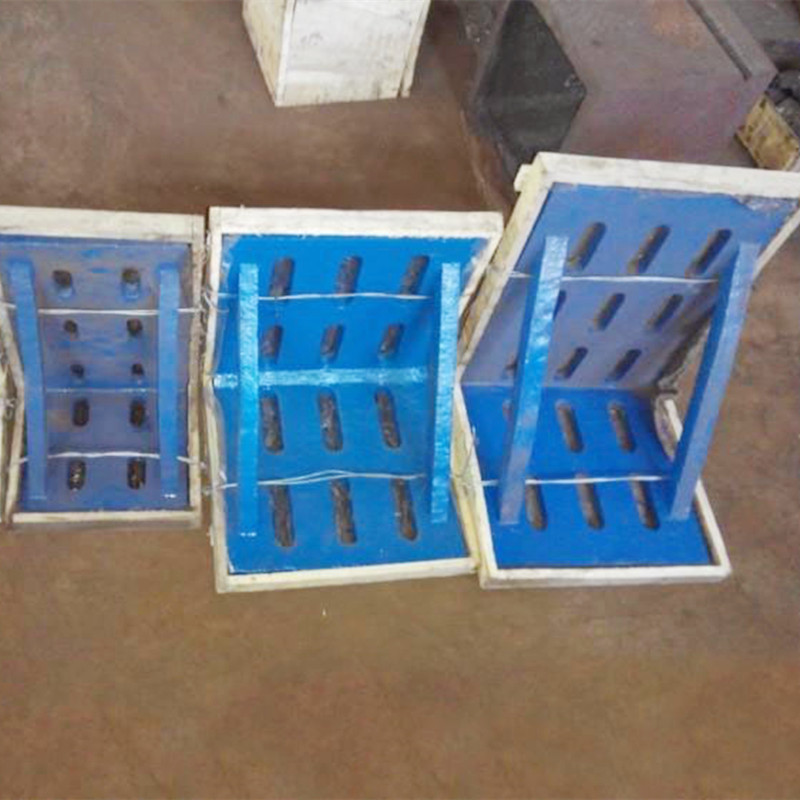Nov . 11, 2024 07:33 Back to list
cast iron base plates
Understanding Cast Iron Base Plates A Comprehensive Overview
Cast iron base plates are essential components in various engineering and architectural applications. Known for their durability, strength, and stability, these plates serve as foundational elements in many structures and machinery. This article delves into the characteristics, advantages, manufacturing processes, and applications of cast iron base plates, emphasizing their significance in modern industry.
Characteristics of Cast Iron Base Plates
Cast iron is an iron-carbon alloy with a carbon content greater than 2%, which gives it unique properties. The primary characteristic of cast iron base plates is their excellent castability, allowing them to be molded into complex shapes while maintaining dimensional accuracy. Their rigidity and high compressive strength make them suitable for heavy loads and static applications.
Another important attribute of cast iron is its vibration-damping qualities. This makes cast iron base plates ideal for machinery foundations, as they can absorb vibrations, reducing wear and tear on equipment and minimizing operational noise. Furthermore, cast iron is corrosion-resistant, especially when treated or coated, ensuring longevity in various environments.
Advantages of Cast Iron Base Plates
The use of cast iron base plates offers several advantages over other materials
1. Durability Cast iron is renowned for its longevity and resistance to deformation under load. This makes it a reliable choice for foundations and base plates, even in demanding environments.
2. Cost-Effectiveness While the initial cost of cast iron base plates may be higher than other materials, their durability and low maintenance requirements often result in cost savings over the life of the product.
3. Versatility Cast iron base plates can be found in numerous sizes and thicknesses, making them adaptable to various applications. They can also be machined or finished to suit specific needs.
4. Thermal Stability Cast iron can withstand high temperatures, making it suitable for applications where heat resistance is necessary.
5. Ease of Fabrication Cast iron can be easily cast, machined, and finished, offering manufacturers flexibility during production.
Manufacturing Process of Cast Iron Base Plates
The manufacturing of cast iron base plates typically involves several key processes
cast iron base plates

1. Pattern Making A pattern is created, typically from wood or metal, which serves as a mold for the casting process. The pattern must account for shrinkage during cooling.
2. Molding The pattern is placed in a mold box, and sand is packed around it to create a cavity in the shape of the base plate. This process can be done using green sand or resin-bonded sand.
3. Melting Iron is melted in a furnace, and the molten iron is then poured into the mold. Various alloys may be added to enhance specific properties.
4. Cooling and Removal Once the iron has solidified, the mold is broken away, and the cast iron base plate is cleaned and inspected for defects.
5. Finishing The plates may undergo additional processes such as machining, grinding, or painting to meet specific dimensional and aesthetic requirements.
Applications of Cast Iron Base Plates
Cast iron base plates are utilized across diverse industries
- Machinery Foundations Many industrial machines require robust base plates to provide stability and support. Cast iron base plates are commonly used for this purpose.
- Construction In construction, cast iron base plates serve as anchors for columns and other structural elements, providing a stable foundation for buildings.
- Railways They are also found in railway applications, imparting stability to tracks and supporting the weight of trains.
- Marine Applications Cast iron’s corrosion resistance makes it suitable for marine environments, used in docks and other facilities exposed to harsh conditions.
- Heavy Equipment In the manufacturing of heavy equipment, cast iron base plates are critical to ensure the stability and durability of the machinery being produced.
Conclusion
Cast iron base plates are indispensable in modern engineering and construction. Their unique properties, coupled with the various advantages they offer, make them a preferred choice across industries. As technology advances and the demand for durable materials continues to grow, cast iron base plates will undoubtedly remain a cornerstone in the design and construction of reliable structures and machinery.
-
Welding Table Cast Iron Surface Finish GuideNewsJul.01,2025
-
Valve Types for Industrial ApplicationsNewsJul.01,2025
-
Types of Strainer for Industrial ApplicationsNewsJul.01,2025
-
Types of Bore Gauge for Precision MachiningNewsJul.01,2025
-
Safety Standards in Welding Fabrication Table Manufacturing ProcessesNewsJun.30,2025
-
Impact of Temperature Fluctuations on Ring Gauge AccuracyNewsJun.30,2025
Related PRODUCTS









